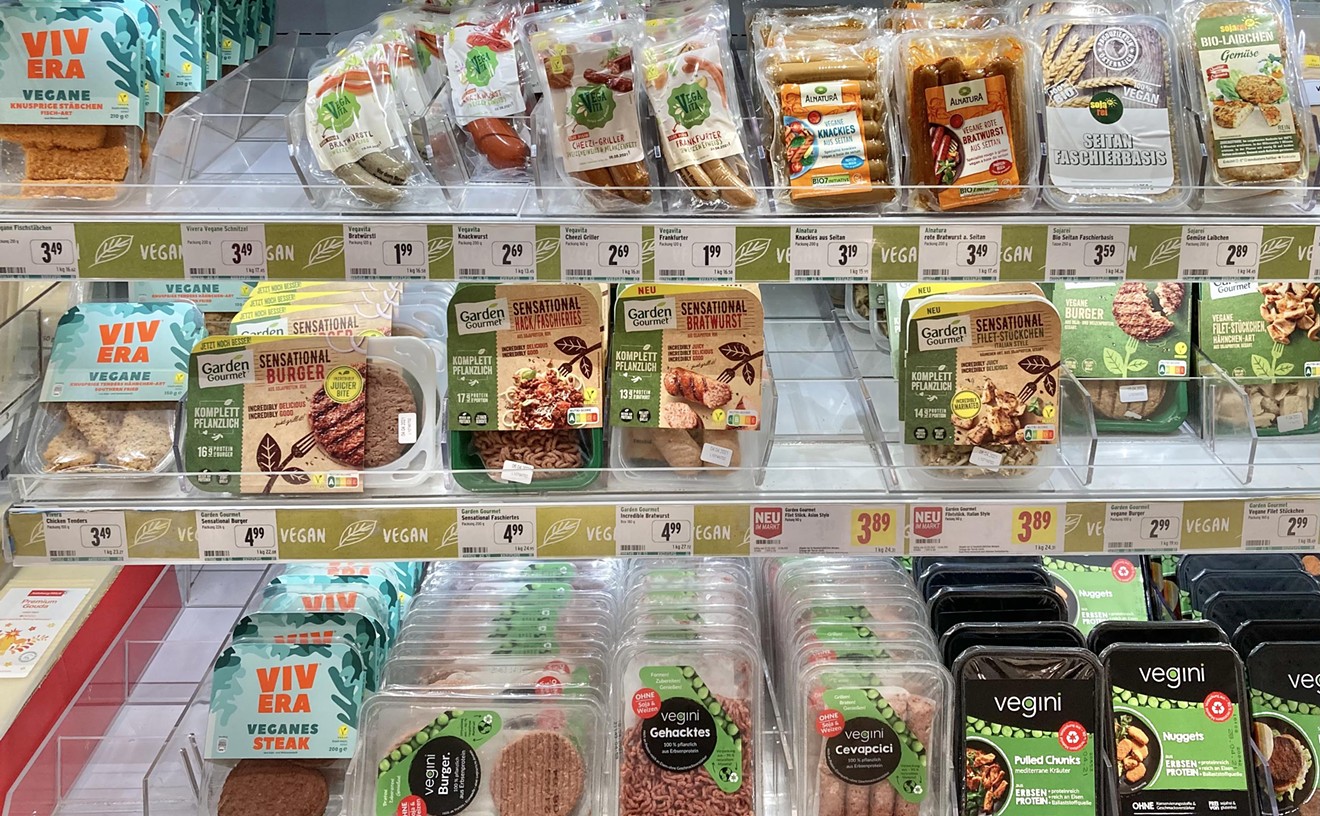Spring is a common time for folks in the Valley to think about getting chickens to begin their own "backyard flock." Hence, that whole "spring chicken" saying. Even an article in the New York Times recently highlighted rules of owning chickens in the city.
Owning chickens is fun and rewarding. Whether you're in it for eggs, meat, or just a new hobby -- being a first-time owner can be overwhelming. Here's a guide to help you though your first adoption.
See also: The Simple Farm in Scottsdale Celebrates Kidding Season with the Birth of Goats
First, be sure your city or town allows backyard flocks. You'll also need to narrow down and choose the types of hens you'd like and decide whether you're interested in raising them from chicks or possibly buying a bird (pullet) that is nearing laying age. Having done both, I can safely say that there's nothing like raising them from chicks, but without a garage or shed -- it will be very, very messy. Different breeds have different egg productions, personalities and abilities to tolerate heat. Online tools like breed selector tool and talking to other backyard chicken owners is an important process. It's easier to start a flock with three to six birds, but make sure if you purchase chicks from a feed store or online, that they have been sexed so you don't end up with a rooster.
Onto shelter: If you raise hens from chicks, you'll need varying sizes of containment (they can't start in a coop), along with special food and a safe heat source, like a heat lamp, to keep them warm. Raising chicks is not for the low maintenance pet owner. You'll need to be able to check on them a few times a day to ensure they are healthy. There's a lot to do those first 12 weeks, so check into educational materials online or locally via the Valley Permaculture Alliance.
Regardless of the age of bird you start with, each flock needs a home. Even if you free-range, you'll want a coop to contain the birds at night. The coop provides a safe place to lay eggs (a nesting box) and for the birds to say dry and warm. It should be ventilated, but not breezy. Most chicken owners attach a run to their coop. This yard-like area should be cleaned at least once a week and should be as large as possible -- at least four square feet for each bird. It helps if you can stand in the run, it makes it easier to clean and retrieve the occasional mis-layed egg. It should have lots of shade in the summertime, someplace to go if it rains, and protect your birds from predators.
Some feed stores sell very nice coops and runs for $300 and more, but you can repurpose many shelters or even use existing fencing in your yard. At some point thought you'll be buying chicken wire, so budget for that -- it can be expensive. Poop is a big concern in coops and some folks use wire in different areas to help keep the floor from becoming covered in poop. We actually put linoleum in the bottom of our coop for easy clean up. If you're handy, many online sources have plans for coops, but make sure it will be in some shade for the heat here in the Valley. Every chicken owner here will tell you that heat is the biggest challenge to birds here and you'll want to be mindful of this if you begin raising chicks in May.
There's a lot to be said about food, but generally full grown chickens get layer crumble or layer pellets. Both are available organically! Treats and enticements might include dried meal worms, chicken scratch (it's a treat, not food) and kitchen scraps (nothing moldy or too acidic) like berries, greens, and even yogurt. Food can be adjusted if your girls aren't laying or if you notice changes in health. Besides the heat, egg and digestive issues can hurt chickens, so keep an eye on what they are eating. Happy chickens will be lively, peck around, and take dust baths.
Last on the checklist is equipment. Your local feed store and even some great online places will sell large poultry waterers in sizes from a gallon to two gallons. If you have a lot of birds you can place several waterers out in the pen. Some hang from the ceiling while others sit on the ground. Be sure to change the water at least every five days, more often if you notice that it's dirty or running low. Evaporation is a problem in the summer and in the winter, there's a few days when you might need to ensure the water doesn't freeze. You can buy feeders as well, but most folks find everyday home items like small ramekins or plastic dishes work well for feeding.
Luckily, a sand-based run is great for keeping chicken's feet dry, but you'll need bedding. There's a general consensus that cedar shavings are a big no-no. They can be very bad for chickens respiratory systems. You can try pine needles, pine shavings, straw, or alfalfa for bedding. Shavings generally have dust that can be bad for chickens, but luckily for us, Arizona has weather that means chickens are usually spending time in a run instead of an indoor space. Our girls need very little bedding in the warmer months.
You should find a small cage or cat carrier in case you need to bring a chicken to the vet. A medium-size cage works well if you have an SUV, and it's a great backup for the really warm summer days. A few days last summer, we rotated taking chickens inside for the hottest parts of the day. With some newspaper and the cage, the girls were happy and cool.
Finally, be sure to used your chicken manure for compost and handle your girls a lot if you'd like them to be docile. If you plan to leave home for more than about 30 hours it's a good idea to have a chicken-sitter, someone who can look in on your girls. Many of our friends love this duty and find reading a book while the chickens range is a lovely afternoon. It's also a good idea to find an avian vet that you're comfortable with and another chicken owner you can call with basic questions.










